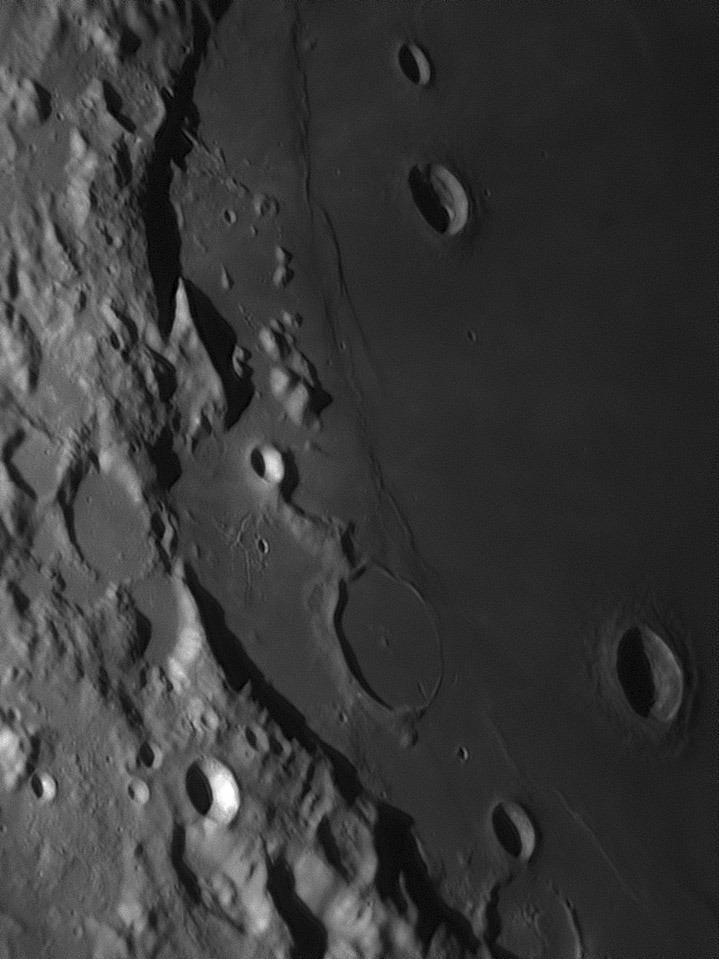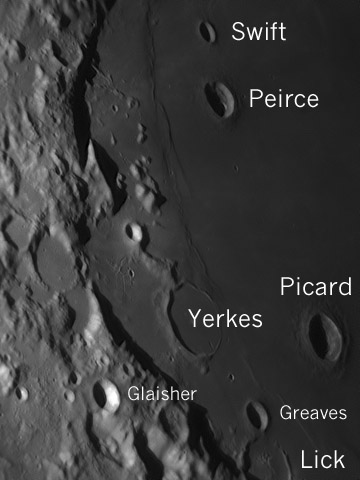Difference between revisions of "March 2, 2014"
| (One intermediate revision by the same user not shown) | |||
| Line 17: | Line 17: | ||
<br /> | <br /> | ||
<strong>Related Links</strong><br /> | <strong>Related Links</strong><br /> | ||
| − | <em>[ | + | <em>[[21st Century Atlas of the Moon|21st Century Atlas]]</em> chart 2.<br /> |
<br /> | <br /> | ||
<hr /> | <hr /> | ||
<br /> | <br /> | ||
| − | <!-- Removed reference to store page --> | + | <!-- Removed reference to store page 2 --> |
<p><b>Yesterday's LPOD:</b> [[March 1, 2014|Smoothered]] </p> | <p><b>Yesterday's LPOD:</b> [[March 1, 2014|Smoothered]] </p> | ||
<p><b>Tomorrow's LPOD:</b> [[March 3, 2014|Moon Over Madrid]] </p> | <p><b>Tomorrow's LPOD:</b> [[March 3, 2014|Moon Over Madrid]] </p> | ||
<!-- End of content --> | <!-- End of content --> | ||
{{wiki/ArticleFooter}} | {{wiki/ArticleFooter}} | ||
Latest revision as of 07:31, 28 October 2018
Notice the Pineapple?

image by Leo Aerts, Belgium
 |
Basin rims intrigue me. I want to understand why they usually are not tall and continuous as fresh crater rims are. Here, the question is why is the western rim of the Crisium Basin broken? North and south of here most of Crisium's rim is continuous. Here in the west it looks like a vehicle could be driven from the outside to the inside on level ground where the two sloping promontories almost touch. (With LRO QuickMap you can see that there is one ridge to drive over.) The two large, ruined craters with flat floors postdate the formation of the basin (they would have been destroyed if they were first) and they do cut into the western rim. But with a basin-wide perspective we are reminded that the eastern side of the basin is even more open, some of the evidence that Crisium formed from an oblique impact. So, perhaps there were two processes at work here. An oblique impact with the projectile coming from the west formed a basin with low east and west rims, and two later impacts carved away a gap through the already low western rim segment. On another topic, notice the slightly elevated and fractured terrain just west of the rim, and northwest of Yerkes. This looks like the interior of a floor fractured crater, minus the crater. Similar fracturing is inside Lick. Are the few low hills nearby remnants of a rim, or is this a case of floor-fracturing not inside a crater?
Yesterday's LPOD: Smoothered Tomorrow's LPOD: Moon Over Madrid COMMENTS?Register, Log in, and join in the comments.
|



